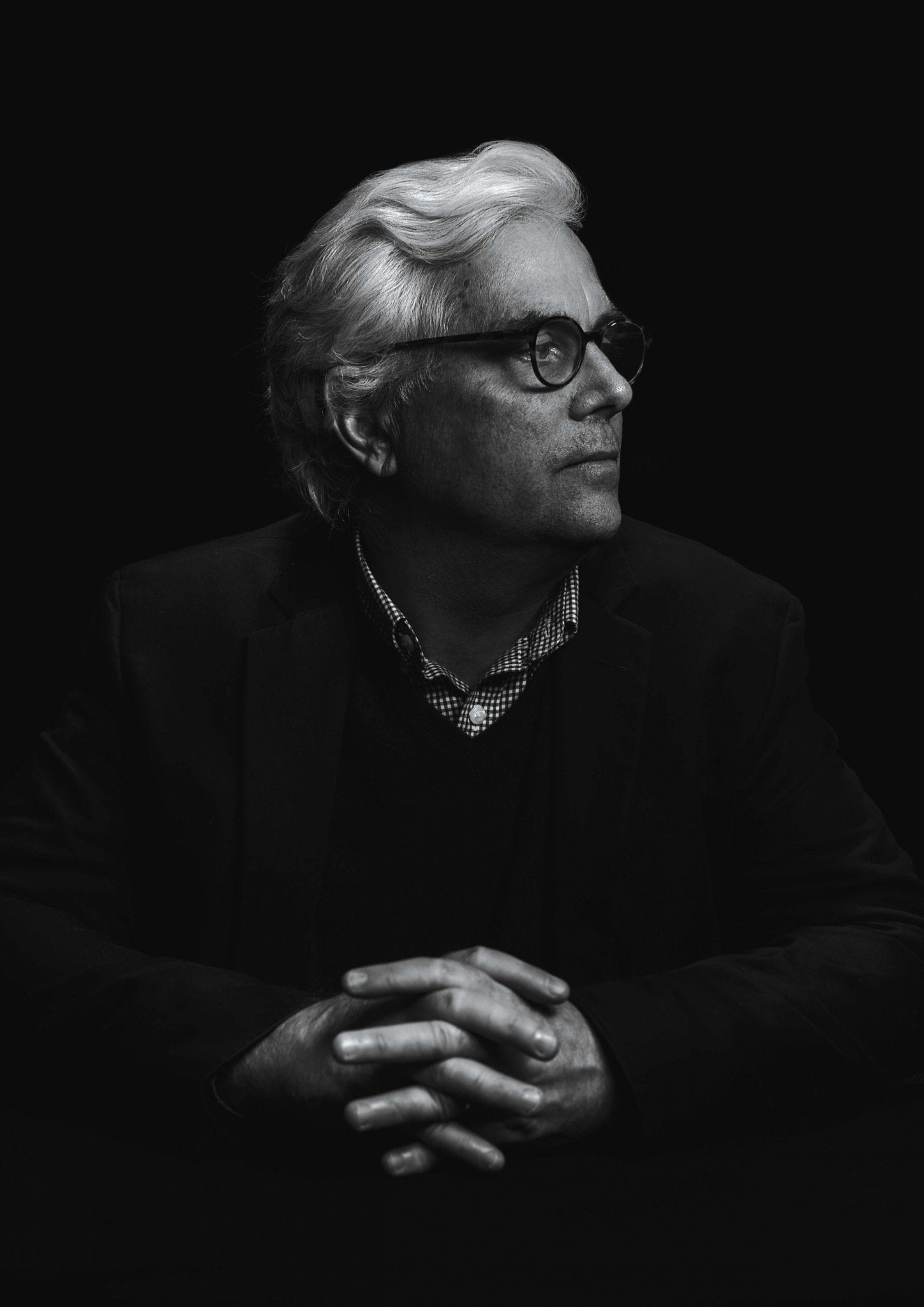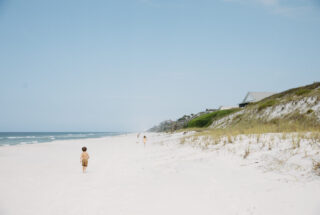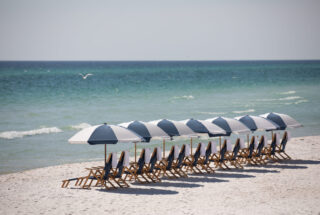

Scott Merrill will not call himself an artist. He resists all romantic descriptions of his work. He will evade questions about his process, his inspirations, and all references to his soul so politely and kindly, that you will nearly miss that he has indeed evaded the questions. What he does, designing and building, is serious business. As he defines it, it’s less of a creative endeavor and more of an ongoing effort to keep the doors open, to take care of the people who depend on him, to solve problems, and to do some good. In the past, he’s used Flannery O’Connor’s comment on her own work to explain how he views his own: “Fiction is about everything human and we are made out of dust, and if you scorn getting yourself dusty, then you shouldn't try to write fiction. It's not a grand enough job for you.” Scott’s designs are nearly regal in their simplicity, an effect of being true to their use, to their environment, and to the influences that helped them into being. This process of taking a complex idea and giving it its truest, most concrete form—as Scott does exactly every time—requires the stripping away of everything unnecessary, a lack of all pretension, an insistence on integrity. You could describe a conversation with Scott in much the same way. One can only hope Scott knows, like Flannery O’Connor, his efforts (as human and dusty as they are) produce enduring results that are beautiful, timeless, and true. This makes him indeed that thing he will not call himself.
Cassie: Could you say a bit about your early life, how it might have influenced your path or choice of vocation? Were there inklings of this in you as a child, of admiring buildings or design or thinking that it may be something you want to do? Scott: My parents were both school teachers, which meant two things: There was a lot of time in the summer for trips and you had to take them economically, and we traveled all over the place. When I look back on it, it’s pretty extraordinary what my parents were able to show us. I think showing us the country—all of the United States—showed me how much things like climate, rocks, agriculture, and building traditions vary from one part of the country to the next. The combination of traveling both with them as a child, and on my own as a young adult, made me patriotic and really enthusiastic about what I think is a really amazing building tradition in the United States. There are two things that you notice simultaneously when you travel from state to state, and it’s that there are certain types of buildings that are remarkably similar, despite the fact that they’re built by people who couldn’t have possibly known about the other’s efforts. Somehow people arrive at logical solutions whether it’s in the Canadian Great Plains or it’s in Kansas, they arrive at the same design for a corn crib, despite the fact that they’re completely independent efforts. So there’s something rational about certain types of architecture that’s seen across the country. At the same time, while there’s this universal aspect about rational buildings, there are local things that distinguish one part of the country and how people build in one part from another part. The fact that they both exist side-by-side is one of the things that was fun to learn.
C: Did you know then that you would go to graduate school for architecture? S: Fortunately there are degrees in architecture that allow you to do it as an advanced degree without any kind of background as an undergraduate. So after my graduation from The University of Virginia, I went to Yale and got a master’s degree in three years. It’s a second chance for people who are a bit late in deciding what they’re going to do.
C: I’m imagining this through line from those trips you took as a child to the ones you did on your own. Things you didn’t even know had been planted in you as a child were taking shape in the background then coalescing in you when you struck out on your own. S: I’m not sure anybody really knows because there’s not a certain moment, but it builds up. And you’re grateful for the chance to take a swerve when you’re in your early twenties.
C: In approaching your projects, you think on grander schemes than the personal. It’s not just about what does this person who is building a home need, but what does the environment around them call for. Where do you begin with understanding what a project is asking to become? Do you start with the person, the place? S: I was the architect at Seaside for a couple of years after getting married, but my interest wasn’t primarily in houses. Houses were just a vehicle. My real interest was in Seaside as a different way of using land. Florida, as much as any state, wastes a lot of agricultural land. So when I got married and was trying to figure out what to do and what the times demanded of young people, I decided that one of the urgent needs in the country was to try and have better models for how intensely land was used. The example of compact development that Seaside represents is the flip side of maintaining open spaces. When you’re interested in relatively compact patterns of settlement, you’re also interested in patterns of settlement that will leave large portions of the countryside untouched. So you get wide open spaces and unspoiled places like Deer Lake—the captured lakes along 30A—partly because there’s not so much pressure placed on them by development with large lots. In other words, you have to think of the wild, natural places as being part of a deal where a certain number of people who travel to Florida might be settled into a smaller amount of land, and thereby help save the natural areas that surround it.
C: How do you see the relationship between architecture and community? I’m thinking of your work at Seaside and at Vero Beach. S: When you put people in proximity, which is what happens in most cities, it also forces people to encounter each other more often. There’s this nice overlay of the environmental aspects of compact patterns of development, plus the sociability that’s engendered by smaller towns like Seaside. We met a lot of people there because we lived in the town. We were constantly running into neighbors and we were always having little social engagements on the street just because of the pattern of the town. If I had to get work done, I just hid in my office. Because if I would venture forth to get the mail, I would engage in half a dozen conversations (that I may or may not have had time for). All that is for the good. Those are the things that are more important to me than the houses themselves.
C: Are these kinds of communities an antidote to the kind of sprawl we see in so many parts of the U.S.? S: I’m impressed that 20-30 years later, despite the fact that cars line up on 30A and there are traffic jams, that the loop is still beautiful and there are still so many preserves that are completely untouched. It’s almost as if what I was saying continues to be true of a place that is much closer to being complete now than it was when I lived there. Places like Deer Lake and the state park around the captured lakes still are pristine environments and haven’t been trampled by the crowds that are attracted there. I’ll give you another example: When my wife and I lived in Washington, D.C., we would like to go out for a day to the country. We would often go to Loudoun County which was northwest of the city and really the most beautiful part of the Piedmont region of Virginia. Over the years we noticed the eastern part of the county got absolutely destroyed by development. The western part remains nice to this day. So, it’s not just a problem with Florida. My experience with seeing Loudoun County develop has something to do with my wish to go to Florida and work on some of the same issues. It’s a pattern that has ruined a lot of places that people love. The middle ground between the density of a town or a city and a rural environment which is beautiful for its openness is incredibly dispiriting. So, the two ends of density and rural settings are the kind of thing I’m going for.
C: Do you have a favorite project, home design or otherwise? One that has stuck with you? S: As a group, I think you want projects to represent a range of things. The Seaside Chapel remains a favorite because, as a public building, it carried the weight of having to reflect the aspirations of the town. And the board members were all neighbors, so it was personal, too. My firm is also currently working on a project in Atlanta that means a lot to me. We are doing a master plan for Fort McPherson. Three miles from downtown, it has a mile of frontage on a MARTA line and so the form it takes will be very important to southwest Atlanta.
C: I was first in Seaside Chapel fourteen years ago now and I can remember the feeling I had within it still. The space was nearly regal in its simplicity. It can be incredibly difficult to take a complex idea and in the process of making it tangible strip away all of the unnecessary layers so that it can be true to itself. Can you say something about that process for you? S: The process is different for every building. It’s a little bit of luck, frankly. The master plan at Seaside designates spots for public buildings. Most of the public buildings at Seaside are relatively modest, like pool houses and the small post office. The Chapel is not large either—it’s probably less than 3,000 square feet. By the time it was built, there were houses much larger than it. Aside from where it’s sited in the master plan, you have to ask yourself, what is the source of the presence that the building has? If it’s hemmed in by houses that are often bigger and more ornate, what distinguishes it to tell somebody that it’s a building that is particularly important to the community in the way that a house can’t be? And simplicity is one of those means. You essentially want to give a small building monumentality, so you ask, “What is the source of monumentality?” or, “What does the monumentality derive from?” And the only thing you have recourse to is to reduce it, make it relatively simple in volume, and make the detailing around the building relatively monumental. It’s somewhere between a classical building and a Carpenter Gothic building. I like that it has a foot in both—there’s a little bit of high-low going on. But to me what I really like about the Chapel is the attempt to appeal to the Carpenter Gothic which was my tribute to Robert Davis, who first thought of Seaside as a collection of rude bungalows whose appeal had to do with rusticity and simplicity and a lot of things that classical architecture isn’t necessarily that good about evoking or reflecting. In a way I would say that the Chapel, in its own monumental way, was kind of a tribute to what Robert first thought about when he built Seaside: a return to rusticity and to bungalows and to cabins. So there’s a lot of things going on. Good buildings tend to draw out a number of different ideas and a number of different issues and good buildings also have people looking at them wondering what it reminds them of. I would describe Alys Beach as being just a little bit difficult to characterize also and I think that’s always a good attribute in a building. If it’s hard to classify Alys as modern or traditional then it’s difficult to characterize the Chapel as classical or Carpenter Gothic, that’s probably in its favor and speaks well of it.
C: Could you speak a bit more to your feelings on Alys Beach. You say it is a place no one quite knows how to characterize. S: When it was being planned, DPZ and the founders were looking at everything from the courtyards of Antigua, Guatemala, to the houses in Bermuda. You can see both of those influences, but you also see other influences as Alys continues to build out. Erik and Marieanne obviously love North Africa, and someone must love Venice. I saw this same thing with Seaside, too. Historically, people didn’t build on barrier islands and so there really was no local building tradition, and consequently a number of traditions were drawn into the vacuum and adapted to the area’s climate and to the builders’ skills. While starting Seaside, Robert and Daryl Davis famously toured the South in that big red Buick convertible with the soft steering. It all sounds like so much indirection, and occasionally the results along 30A are a little muddy, but the lack of a specific local tradition has given South Walton the freedom to combine traditions in interesting ways. I think is probably why Alys Beach is so well-known beyond the region, and why people respond to it so well. We had a lot in common with certain traditions that were quite remote and they had a lot to teach us. I love that notion.
C: You are building at Alys Beach now. What are your thoughts on the project? S: While ground is just now breaking on our first Alys Beach project—a mixed-use building on the eastern edge of the Amphitheater—we have worked with Alys Beach for more than ten years. The project means a lot to me. Everybody knows Alys Beach for its houses, the scale of its houses, and the scale of its pedestrian footpaths. Once they go into developing mixed-use buildings on the Amphitheater, they’re dealing with a different aspect of Alys Beach that will be fun to explore. It will necessarily have a bigger scale, and it won’t be adorable in the same way that the houses are, but we’re hoping that the cumulative effect of the buildings around the Amphitheater will finally give Alys Beach that first-class central space that all cities have. It’s fun to think about. Condominiums are kind of like the bottom feeders of Florida, they have not done well. And it’s been fun to try to think about how a type that has overall not contributed greatly to our built environment here, how it might contribute and how it might be a really beautiful building type. You have to take each project on its own terms.
C: As we’ve been talking, my mind has wandered several times to William Carlos Williams quote, “No ideas but in things.” Let’s talk about the tangible, what you can hold onto, as it pertains to where you quote Flannery O’Connor. S: Yes, Flannery O’Connor is great for being concrete. Most of the people I like, writers or philosophers, talk about this insistence that you are concrete. That you don’t float abstractions. That your ideas are situated in real problems and real places and things. I am big on being concrete.
“Your ideas are situated in real problems and real places and things.”
C: Who are some of those writers? S: Robert Penn Warren’s All the Kings Men. Walker Percy’s The Moviegoer. Flannery O’Connor’s Mystery and Manners. I love hearing her talk about what it is to teach other people how to write. That’s where the concreteness really comes through. There was a guy from West Virginia named Breece D’J Pancake who was in the writers program at the University of Virginia when I was there, and every once in a while you read somebody who writes these perfect short stories—even perfect novels—and they describe a place. I toured back and forth across West Virginia between home and school so I knew a bit about where he wrote about and if you know the place where somebody writes about, you know whether they’re describing it correctly and inventively, and he does.
C: Are there other ways in which the South has influenced your work? S: While I am not sure how it affects my job, I am pretty sure that All the Kings Men is the greatest American novel. Steve Earle has made the best music in the country over the last 30 years. I’m a little like those Canadians in the Band who were so influenced by Levon Helm and the musicians he introduced them to in Arkansas. Sometimes people from far away are really receptive and attuned to what a region does well.
C: Wrapping up, I’m thinking about your use of the words practicality, rationality, concrete. You’re insistent on staying in the realm of the tangible. Is that a product of your nature or experience? S: I find the social aspect of building with all the people it takes to do it—all the challenges of coordinating them—to be such fascinating challenges. It’s fundamentally social to get a bunch of people to go in a constructive direction, and I think the pompous stuff is just not necessary. It’s so inherently interesting as it is. It’s frustrating too, and I think you have to acknowledge that it’s frustrating or else you’re not doing justice to people who manage to do something more than mediocre. It’s a job and a profession where frustration is a huge part of it. You have to acknowledge that. It’s very practical. For example, my partner George Pastor came to my practice in 1991. His wife was pregnant, my wife was pregnant, a recession was coming on, and by the time he finally got here, all the work we had disappeared. I call it a serious business due to a number of experiences that made me realize I had to stay in business to take care of people who depend on me. That’s a huge part that keeps it from being just an art. There are pregnant women (laughs) who depend on you and you can’t take that lightly and it’s difficult to talk about other things when there are people who depend on you to do your job.








